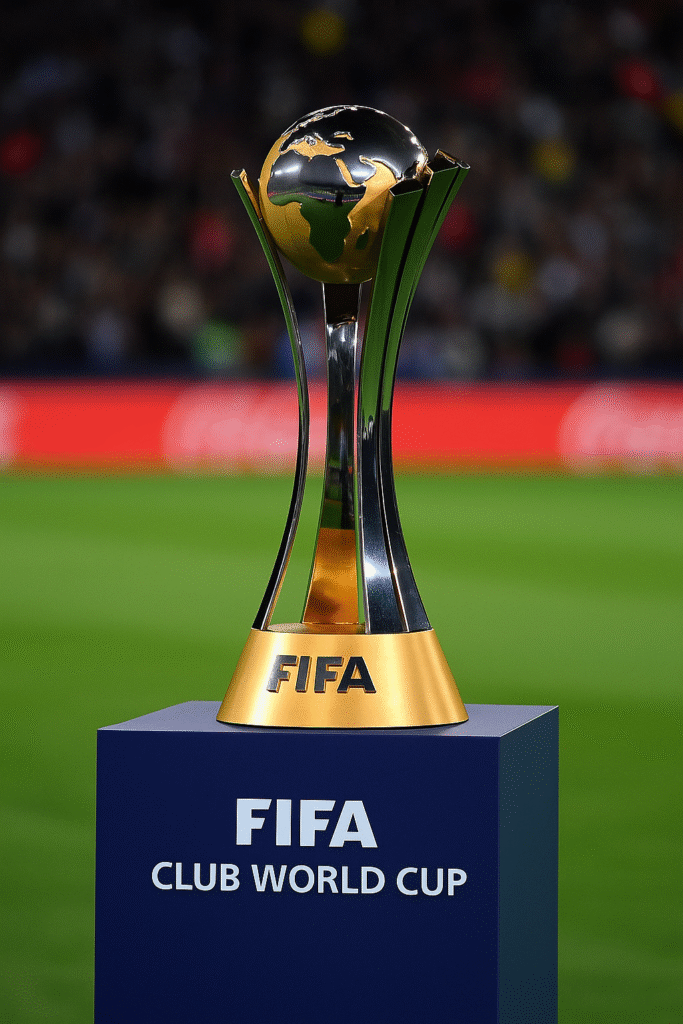
Where Clubs Become World Legends
Not everyone watches it. Not everyone takes it seriously. But ask any player who’s lifted that golden trophy — the FIFA Club World Cup means the world. It’s not just a competition; it’s proof that your club, your shirt, your people, made it to the top of the football mountain.
A Beginning Few Remember (2000)
The very first FIFA Club World Cup happened in 2000. The host? Brazil. Not many people outside South America paid attention back then. But imagine this — clubs from all over the world, not just Europe and South America, coming together for one big fight. For once, African and Asian champions shared the same turf with giants from Spain and Brazil.
Corinthians, a Brazilian club, won the title. They beat Vasco da Gama in a final that was more nerves than goals. No Instagram highlights, no viral tweets — just passion. Raw, old-school football.
And then… silence. Financial issues and FIFA politics put the tournament on pause. For five years, it disappeared.
2005 – The Reboot That Stuck
When it came back in 2005, the world had changed. The Champions League was booming. Players had become global brands. Yet still, FIFA believed in this little idea: let’s see who really is the best club on Earth.
Since then, it’s been held almost every year. Europe usually dominates — clubs like Barcelona, Chelsea, Bayern, and especially Real Madrid have made it their playground. Madrid alone has won it five times.
When the Underdogs Bit Back
In 2010, a team from Congo — TP Mazembe — shocked the world. They didn’t just show up. They beat Internacional of Brazil and reached the final. A team no one bet on. No million-dollar budget. Just grit, belief, and maybe a little football magic.
That victory wasn’t just theirs. It echoed across the whole continent. For kids playing barefoot in Nairobi, it was everything. For coaches training players on dusty fields in Bamako, it was validation. It said: “You matter too.”
A Stage That Grows Bigger (2025 and Beyond)
In 2025, everything changes.
FIFA is launching a new version of the Club World Cup. Instead of 7 teams, there will be 32 — just like the World Cup. Held every four years. Hosted by big nations like the USA. What once felt niche is now going fully mainstream.
Picture this: Mamelodi Sundowns vs Manchester City. Urawa Reds vs Flamengo. These aren’t just matches. They’re moments where cultures collide and football becomes a universal language.
Why It Matters More Than We Think
Critics say it’s pointless. That it’s just a trophy for rich clubs to flex. But they miss the point.
This tournament is about visibility. It tells the kid in Ghana or Malaysia that yes, your club can stand next to giants. It reminds fans that football isn’t just Madrid vs Liverpool — it’s everyone vs everyone.
More than just matches, it creates opportunities. Scouts find hidden gems, clubs earn recognition, fans connect with new cultures. That’s a rare gift in modern football.
Final Whistle – But the Story Continues
The FIFA Club World Cup might not have the rich history of the Champions League or the universal emotion of the World Cup. But it has something else — heart.
It dares to try. It grows in reach and meaning. And most importantly, it gives chances.
For clubs, players, fans — and the dreamers watching from afar — that might be enough.
